Consequences
Type: Commitment, Photography
Date: Abril 14 - June 5, 2010
/ Venue: Estació Intermodal de Palma
Time: 9-21 h / Price: Free
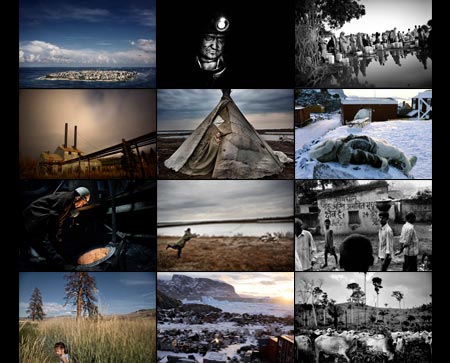
A project by nine of the most highly recognized and experienced photojournalists working today, hailing from seven different countries. Photographers that have made – and are committed to continue making – impact on views and public opinion through photography. They all work independently and together they’ve created the NOOR photographic collective and foundation, to combine their talents and perspectives to generate new projects.
In the summer of 2009, these nine photographers decided to unite their efforts to create a group project that shows the humanitarian effects of climate change. The Consequences project was launched with a series of events and public initiatives during the United Nations Climate Summit in Copenhagen in December 2009.
Consequences is a showcase for creativity in photography and an eyewitness record of the actual causes and humanitarian consequences of climate changes; not calculated future events but every day realities experienced by millions of people around the world in the form of hunger, disease, conflict, forced migration and loss of livelihood and human rights.
Consequences comes at a time when the world’s attention is drawn to the problems of Climate Change and to the urgency of addressing this matter. Developed in a period of three months, all stories were produced to the highest standards and have been extremely well received by international press and the general public. By taking Consequences to the widest audience possible, we hope to contribute to a growing understanding of the causes and effects of climate change.
Part of a multi-year group project, Consequences by NOOR will be continued in the years ahead, and elaborated with the Solutions project, focusing on climate change solutions.
Jan Grarup (Denmark, 1968)
Climate Refugees
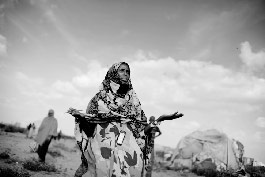
Horn of Africa | Nov 2009
The world’s largest refugee camp in Dadaab, Kenya is bursting at the seams with more than 300,000 occupants, and more coming everyday. Many of them are so called “climate refugees”, people forced to leave their homes following several months of severe drought. The precarious situation recently worsened due to heavy rains. With the arid land too dry to absorb rainfall, floodwaters are rising, destroying shelters and contaminating sanitation facilities. As a result, waterborne diseases such as malaria are thriving and rapidly infecting thousands. The UN estimated that by 2012 there will be over 50 million climate refugees in Africa alone.
Over the last 20 years, Jan has traveled the world documenting many of the defining moments of history. Jan has documented daily life on both sides of the intifada with his stories “The boys from Ramallah” and “The boys from Hebron”. Jan is a recipient of numerous awards and resides in Copenhagen.
Philip Blenkinsop (UK/Australia, 1965)
The Burning Coal in Jharia
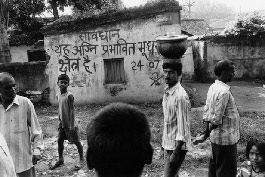
Jharia, India | Oct 2009
Under Jharia’s crust, lies one of the largest coal deposits in India. But for the people who live above an inferno, Jharia is a condemned place. For almost a century, fires have burned uncontrolled in the mines beneath Jharia, polluting the air with poisonous fumes and splitting the ground with dangerous fissures. For the impoverished residents of Jharia, stealing coal to sell and picking through collapsed buildings for salvageable material is a dangerous way of life. And now, with the earth literally collapsing beneath their feet, they face an ecological disaster.
Since arriving in Asia in 1989, Blenkinsop’s name has become synonymous with forgotten conflicts. His work, published in international arenas, has been the catalyst for much discussion and amongst other accolades was awarded Amnesty International’s Photojournalism prize for excellence in human rights journalism. Blenkinsop continues to live in Asia.
Yuri Kozyrev (Russia, 1963)
Yamal Peninsula
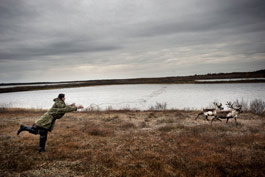
Yamal, Russia | Oct 2009
In the language of the indigenous Nenets, “Yamal” means “world’s end.” This 435-mile long peninsula in Siberia is home to both 42,000 Nenets and the largest natural gas reserve in the world. For a 1,000 years, the Nenets have herded their domesticated reindeer to summer pastures above the Arctic Circle. But now, the Nenets’ traditional way of life is threatened by warming temperatures that turn the tundra into a boggy swamp and by the world’s rapacious appetite for natural gas. The Ob River, which the Nenets cross to return to their southern pastures, freezes later than ever before, forcing reindeer to forage longer in depleted winter pastures.
A native of Russia, Yuri has covered every major conflict in the former Soviet Union. He has spent much of the past six years in Baghdad, working for Time magazine. Yuri has received numerous honors, including the OPC Oliver Rebbot Award, ICP’s Infinity Award for photojournalism and several World Press Photo awards. Yuri is based in Moscow.
Pep Bonet (Mallorca, 1974)
Blackfields
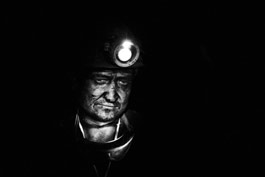
Coal Mines, Poland | Sep 2009
Poland is one of the largest producers of coal in Europe and not coincidentally, also one of the continent’s most polluted countries. The Upper Silesian Coal Basin in Poland, where coal has been mined for more than 150 years, is thick with mines, steel mills, coke ovens and chemical plants. Waste from these industries fills hundreds of dumps across the region. Smoke from coal-fired plants pollutes the air. Runoff from the mines has contaminated the groundwater, streams and lakes. Underground exploration has caused irreparable damage to the landscape. Despite the reforms of the last decade, coal mining remains a dangerous and dirty business.
Pep’s work focuses on African issues and long-term projects. His work on social issues such as HIV/Aids has led to several photography books and many exhibitions worldwide. Pep is a recipient of the Kodak Young Photographer of the Year Award, the Eugene Smith Humanistic Grant in Photography and World Press Photo Awards. Pep Lives in Mallorca.
Kadir van Lohuizen (The Netherlands, 1963)
Brazil’s Range War
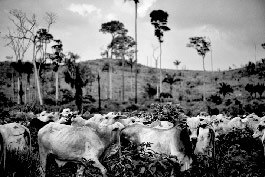
Para State, Brazil | Oct 2009
The rainforests of the Brazilian Amazon are shrinking by tens of thousands of square kilometers a year. About 60 to 70 percent of the deforestation occurs as rancher cut, burn and bulldoze trees, often illegally, to create pastures for the country’s burgeoning cattle industry. In recent years, Brazil has become the largest exporter of beef and, not coincidentally, the third largest polluter in the world, after China and the United States. Fires from the burning forests and the ovens that heat the wood into charcoal fill the skies. The cattle, too, are responsible for methane gases. Even nature preserves are not safe from the illegal deforestation.
Kadir has covered conflicts in Africa and elsewhere, but is probably best known for his projects on seven rivers of the world and the diamond industry. He has received numerous prizes, including two World Press Photo awards. He is on the supervisory board of World Press Photo and has published four photo books. Kadir is based in Amsterdam.
Nina Berman (USA, 1960)
Path of Destruction
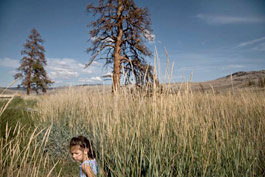
British Columbia, Canada | Aug 2009
Mountain pine beetles have decimated more than 14.5 hectares or 36 million acres of pine forests in British Columbia. Experts predict that by 2014 at least 80 percent of the mature Lodgepole pines in British Columbia will be dead. Winter temperatures below minus 20 degrees Fahrenheit once kept the beetle in check. Warming trends, however, have permitted the beetle larvae to survive the winter and proliferate at an astounding rate. Dead trees are fodder for wild fires. Authorities acknowledge that man cannot stop the rampage of the pine beetle.
Nina Berman’s long-term projects have focused primarily on the American political and social landscape. Her work is widely exhibited in museums and galleries worldwide. She is the recipient of numerous grants and awards including World Press Photo, the Open Society Institute and the New York Foundation for the Arts. Nina lives in New York.
Stanley Greene (USA, 1949)
Shadows of Change
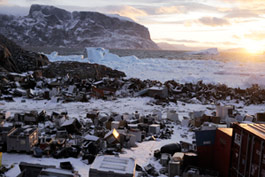
Uummannaq, Greenland | Oct 2009
“This weather does not belong to us. It belongs to someone else. If we don’t have ice, we are going to die.” With this prediction, an Inuit hunter sums up the dire situation for the indigenous peoples who live in northern and eastern Greenland. Nowhere on Earth, perhaps, is the evidence of climate change more apparent. In some places, the ice shelf is already too thin to permit the Inuit to travel to traditional hunting grounds. The Inuit, who survived for centuries by hunting seals and whales, are watching their way of life disappear before their very eyes.
Stanley Greene has worked extensively all over the world. His most well known body of work is his coverage of the war in Chechnya, from which he released “Open Wound” in 2003. He is a recipient of the Eugene Smith Humanistic Grant and numerous other awards. Stanley is based in New York.
Francesco Zizola (Italy, 1962)
A Paradise in Peril
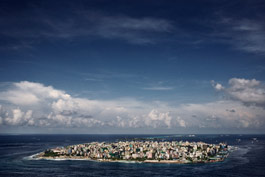
Maldives | Oct 2009
The Indian Ocean island nation of Maldives is the lowest lying country in the world. As the oceans fill with water from melting glaciers, this tropical paradise will be the first country on the planet to slip below the waves. Experts predict that within the next 15 years, rising sea levels will force the island’s 396,000 residents to migrate elsewhere. Other islands and coastal regions around the world face similar threats. Migrations forced by rising sea levels will disproportionately affect poor nations and the developing word as climate refugees overwhelm neighboring countries.
Francesco has photographed the world’s major conflicts and its hidden crises. Francesco has received numerous international awards and prizes, eight World Press Photo awards and four Pictures of the Year Awards. Francesco lives in Rome.
Jon Lowenstein (USA, 1970)
In the Oil Sands
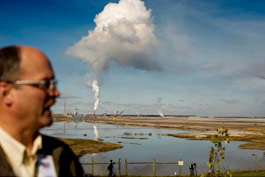
Alberta, Canada | Oct 2009
The oil sands of Alberta, Canada, represent the second largest source of crude oil in the world, behind Saudi Arabia. Beneath an area the size of the Montana are an estimated 170.4 billion barrels of crude oil. The small town of Fort McMurray has exploded with the influx of oil patch workers from around the globe, and Canada’s coffers have swelled with billions in royalties. But there is a downside. Oil sand mining degrades the landscape, pollutes the water and with its associated refining industries accounts for five percent of Canada’s total greenhouse gas emissions.
Over the last 10 years, Jon has specialized in long-term, in-depth documentary photographic projects that question the status quo. His recent work includes stories from Central America and South Africa. Jon was recently named a 2008 Alicia Patterson Fellow and garnered the 2007 Getty Award for Editorial Images. Jon resides in Chicago.
Opening: Wednesday, April 14, 2010 at 8 pm.
Exhibition: April 14 – June 5, 2010
Venue: Estació Intermodal de Palma, Mallorca
Visits: monday to sundays from 9 to 21 h.
Tickets: Free
